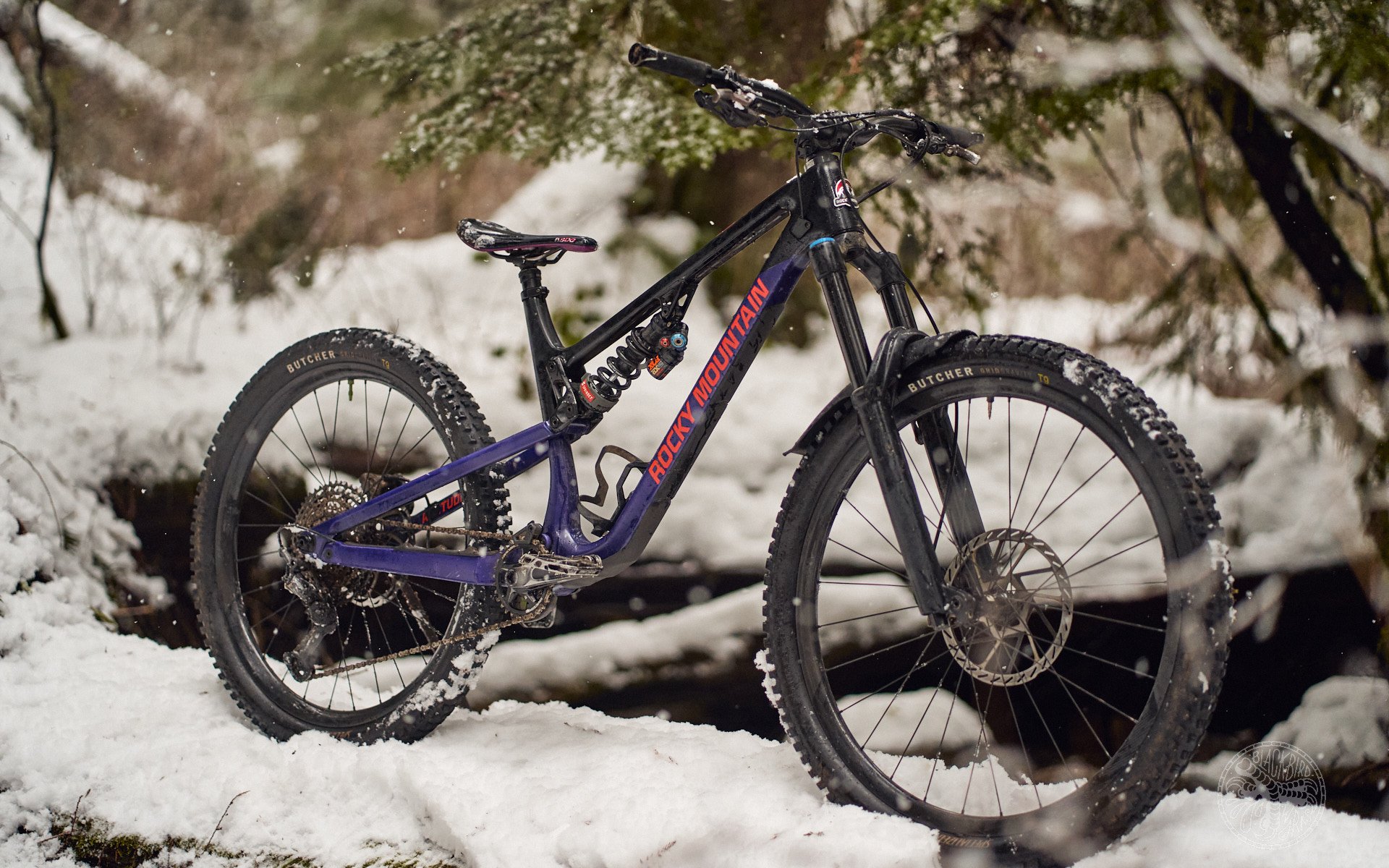
REVIEW
Rocky Mountain Altitude MX Link
What it is
Rocky Mountain dropped the current iteration of the Altitude in 2021, and you can check my review of the Altitude C70 here. It’s safe to say that the Altitude is not only an enduro race bike, but a heavy hitting trail bike which absolutely does not live in the sled category. Vast combinations of geometry are facilitated by the Ride-9 flip-chip and 2 Position dropout. Rocky one-upped themselves in the Altitude adjustment department, offering a MX mount, which allows riders to use a 27.5“ rear wheel instead of the stock 29”.
For a minute, early mixed wheel/mullet setups seemed like a hasty bridge for riders uncomfortable with a full 29” rig, potentially combating butt clearance issues on steeps, or reducing understeer of the rear wheel. Judging by the response from pros, setup-obsessed riders (and bike manufacturers recently equipping mixed wheels as standard spec), mixed wheels are here to stay.
Rocky Mountain rider Thomas Vanderham mentioned he’s played with a mixed wheel setup on an Instinct (Rocky's Enduro rig at the time), beginning around 2017. Utilizing different shock lengths and offset bushings, he arrived at a ballpark setup which worked well for his beastly riding style. When the current Altitude was in prototype phase, a modular front shock mount was implemented. Vanderham proposed a mixed wheel link be machined, maintaining the geometry of the 29” version. The MX Link then arrived in the summer of 2022. Check out Thomas and Andréane Lanthier Nadeau’s shredding on the MX linked Altitude here.
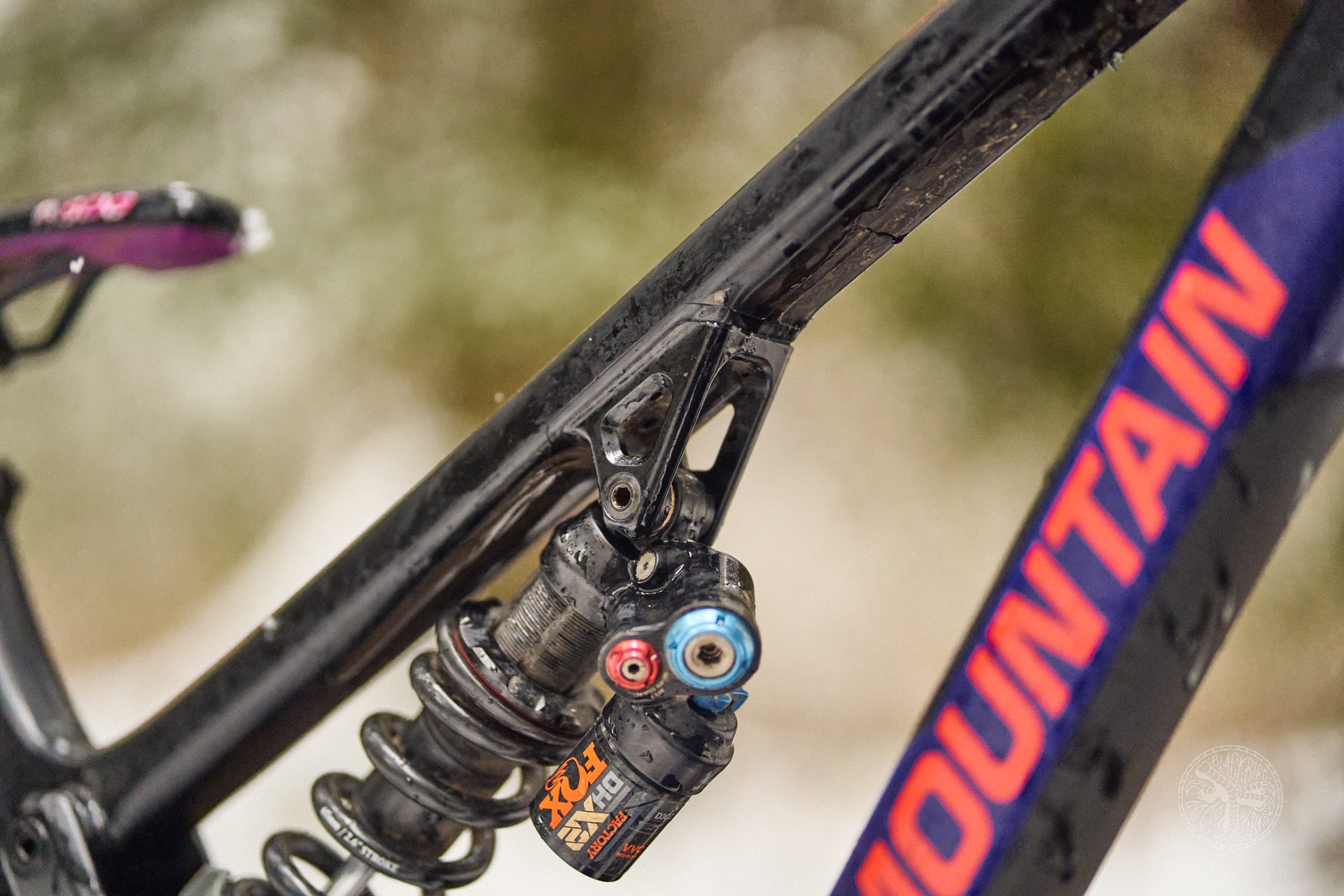
The MX Mount is almost imperceptibly different than that stock 29” upper shock mount. Photo: Deniz Merdano
Setup
Installation of the MX Mount is simple - remove the forward shock hardware, unbolt the existing forward mount, bolt the new one in, and torque it down along with reinstalled shock hardware. The 27.5” rear wheel also shifts one‘s weight bias slightly rearward, so the spring rate needs to be upped ever so slightly - easily done with an air shock. I’ve been using a Fox DHX2 coil with a Sprindex adjustable spring, upping the rate by 5-10 lbs. Rocky also advises that their Ride-9 only works with the MX Mount in positions 1 through 5. I’ve kept the Ride-9 in position 3.
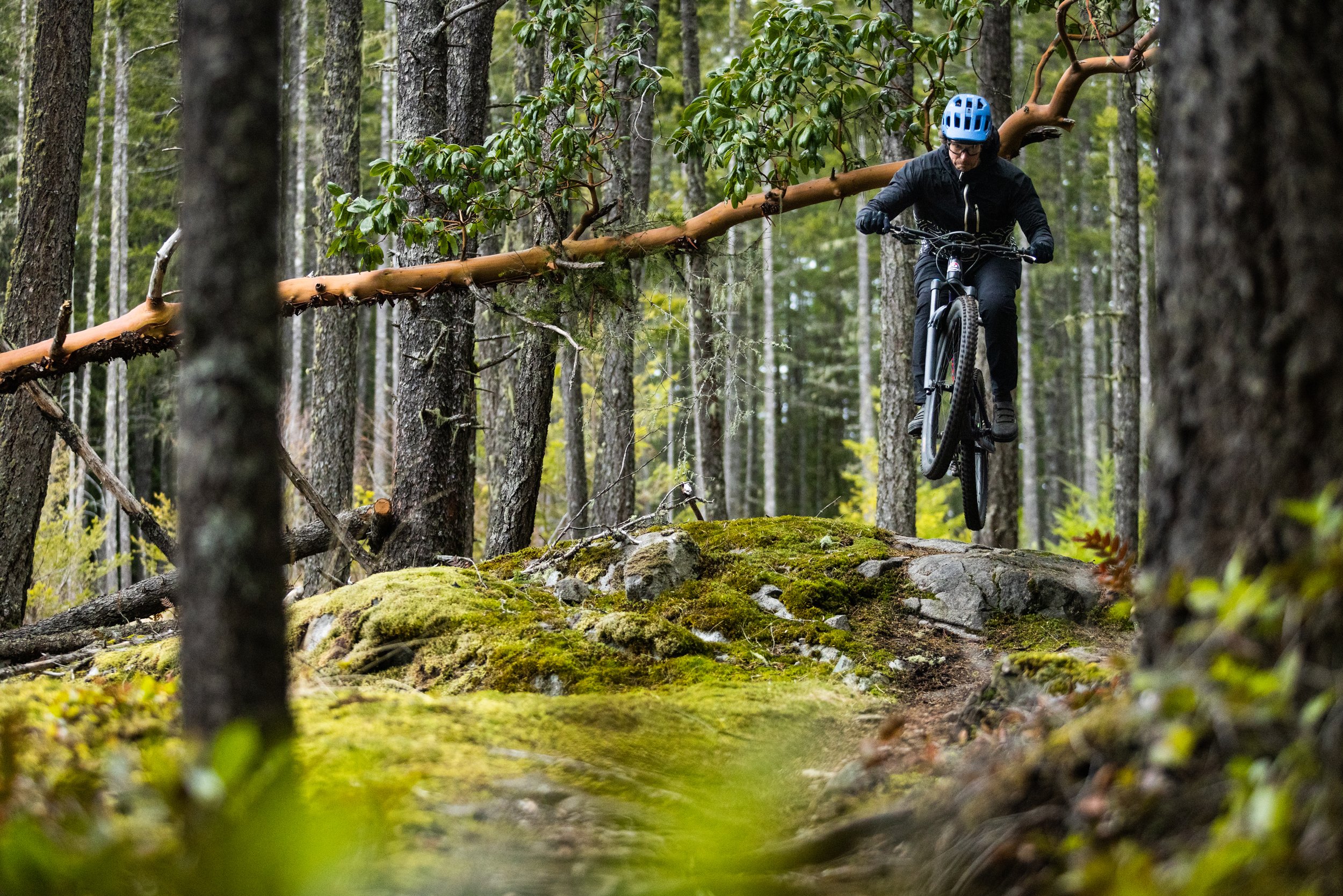
Facial expression looks like brown shorts are a-brewin’ here, but extra rear wheel clearance spares any undercarriage grazing. Photo: Hailey Elise
The Ride
When I bolted the MX Link aboard my Altitude, there was no question that the bike’s handling characteristics changed for the better. A local flow trail was recently transformed from amazing to otherworldly with the addition of many handbuilt bike park quality berms, on what were once flat corners. The smaller rear wheel positively blasted me through the speedy berms. I was able to stay more foward with my body positioning, feeling more precise with front wheel placement, simultaneously flicking the rear end around. On flatter corners, the playfulness instigated leaning the bike over more than I ever have, exploring the limits of side knob grip. The MX Mount absolutely makes the rear end more lively, and I’ve yet to find where it’s served me wrong.
On steeper tech trails, turn initiation arrives quicker. This is particularly handy while dodging rocks and trees exiting slabs and steep pitches, wrangling the rear end around and continuing down ze gnar unscathed.
The inherent smaller rear wheel obviously affords more butt clearance while over the rear end of the bike on steep terrain. This is great for riders of a smaller stature. I’m 182cm/6’ tall with a proportionally shorter inseam than most (31”) but still get buzzed with a 29” wheel, and during chunky moves this reduces the chance of also smacking the seat with your torso and getting bucked.
Spinning up Mount Seymour road, I observed friends ahead spinning the same cadence and gear while they slowly pulled away from me. This isn’t a deal breaker by any means, but you move slightly slower on climbs. For the extra playfulness, it’s a worthy trade-off.
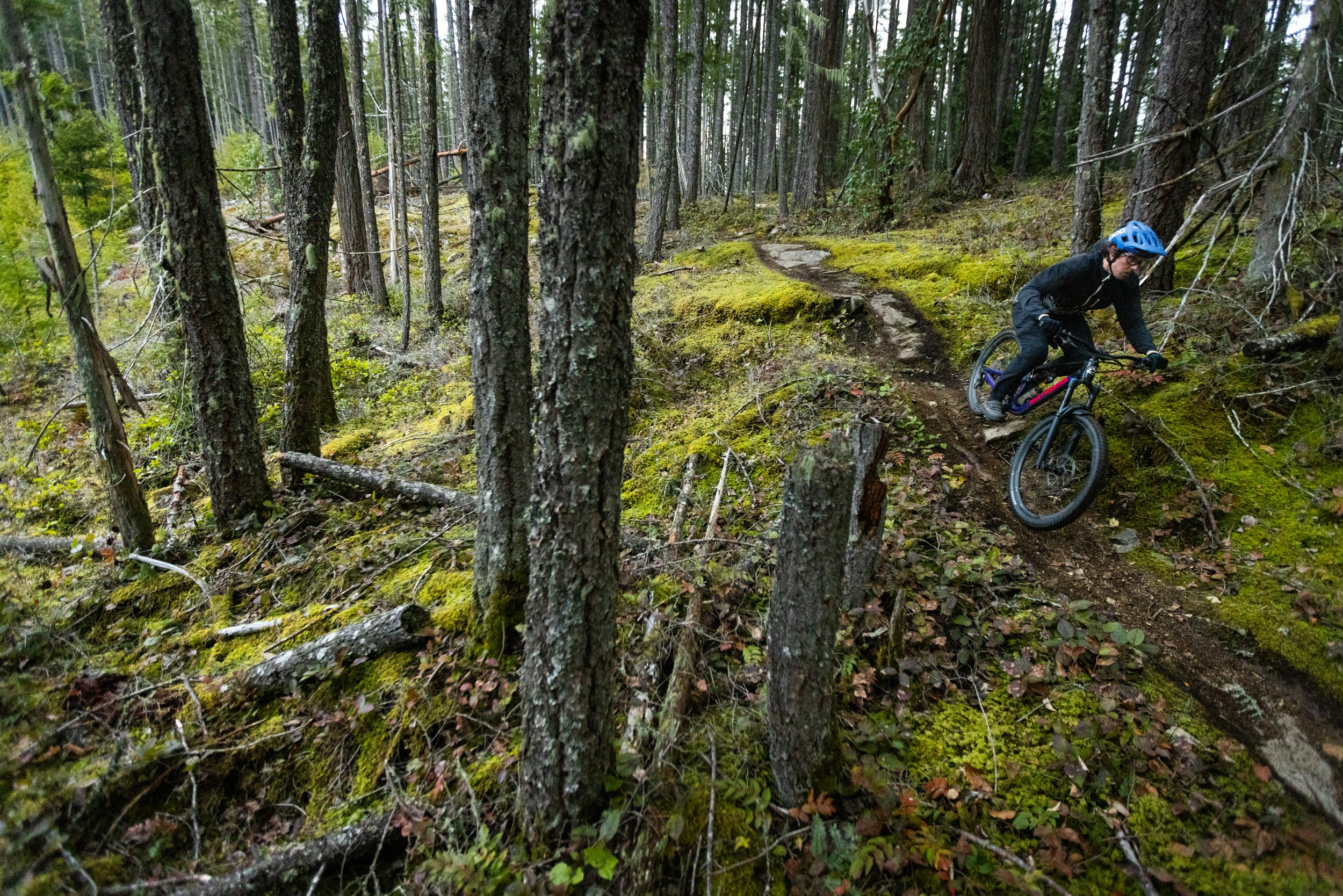
Photo: Hailey Elise.
Your $136 CAD would be well spent on the Rocky Mountain MX Mount. The Altitude is already a fantastic heavy hitter of a trail bike, and why wouldn’t you want to make it more flickable while keeping its stability? I‘m looking forward to making the switch back to a 29” rear wheel, but I predict that will only reinforce the idea that the 27.5” will live there forever.
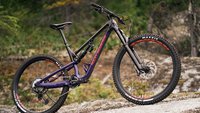





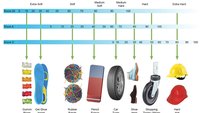

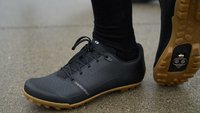
Comments
Dave Smith
1 year, 1 month ago
The Specialized Big Hit was ahead of its time.
Reply
Ride.DMC
1 year, 1 month ago
I had one back in like '01 and my biggest gripe was the fact that I couldn't just move my front tire to the rear wheel and get a new front tire when the rear tire needed replacing - thus stretching my MTB maintenance dollar...
I wasn't that bothered by the limited seat post length because back then everyone pushed uphill anyways. I didn't need a longer post for climbs.
Reply
Ryan Walters
1 year, 1 month ago
Won’t lie, this is the biggest reason I’m resisting the mullet train - the front-to-back tire rotation game. Made all the more relevant now that I’m currently running same tires front and back.
Reply
BarryW
1 year, 1 month ago
Yep.
As my wife runs a 27.5 bike and I have to keep/maintain two wheel sizes I realize that's a tiny nuisance, but not one I want within my own bike.
#lazyisefficientright?
Reply
Znarf
1 year, 1 month ago
Glad you like it so much!
One question on the „same cadence“ - friends spinning away thing though:
Couldn‘t you just go one gear harder and be as quick? At least on a road the mullet setup shouldn‘t pedal slower, apart from the small effect of a different seat angle. Same tire model/wheel of course. Or is there more to it?
Reply
Lu Kz
1 year, 1 month ago
"Couldn‘t you just go one gear harder and be as quick?"
Yeah I'm with this guy, get that fitness up! Just pedal harder!
Reply
Cr4w
1 year, 1 month ago
You could always just put a motor on it.
Reply
Lu Kz
1 year, 1 month ago
Hey now you're talking! Then we could really get those wheel sizes down!
Reply
mrbrett
1 year, 1 month ago
I was happy with the gearing (and by extension final-drive ratio) on my bike, so when I went to a mullet rear wheel I figured a 2 tooth larger chainring would keep it very nearly the same.
Reply
IslandLife
1 year, 1 month ago
I think he's just saying/illustrating that there is a small difference. So, yes you could offset this small difference by either using a harder gear, pedaling faster or just use the usual method and swap your chainring.
I've always used a 30t on 29rs and a 32t on 27.5 or MX bikes. It's not a perfect =/= but it's pretty close.
Reply
06hokieMTB
1 year, 1 month ago
Ditto. I find 30T for 29ers and 32T for 27.5 or MX works great with 12 speed 10-51T Shimano drivetrains.
Loving the increased/dedicated MX focus for the long travel (150mm+) segment of bikes!
Reply
Graham Driedger
1 year, 1 month ago
This is what I'm saying - pedaling is slightly slower, nothing more. And I'll run my 30t for extra rock bashing clearance.
Reply
bermed
9 months, 3 weeks ago
Graham, when you say that
"I observed friends ahead spinning the same cadence and gear while they slowly pulled away from me. This isn’t a deal breaker by any means, but you move slightly slower on climbs."
Do you mean that you need to pedal harder (put out more watts) to achieve the same speed on a climb as riders on a full 29 setup, or that using the same gearing you need to pedal at a higher cadence?
Asking because I would definitely go MX on my Altitude if it meant I could have easier gearing, but not if it meant I need to pedal harder to achieve the same climbing speed.
Reply
BarryW
1 year, 1 month ago
Exactly.
Also, a smaller wheel inherently gives a lower gear, so you can fix that with a large chainring or shifting up down the cassette.
Not sure why this is listed as a tradeoff as it's just using gearing as appropriate.
Reply
finbarr
1 year, 1 month ago
The modular shock mount is the biggest reason I regret getting an alloy Instinct (the modular mount is only on the carbon models). If I were buying again, I'd totally spend the extra $$$ to have the ability to play with the rear travel.
Reply
khai
1 year ago
It's really too bad that Rocky made this a carbon only option...
Reply
Reaper
1 year, 1 month ago
Anyone MX'ed a current generation RM Slayer 29'er?
Reply
Mammal
1 year ago
I've seen one in the buy'n'sell, but not up close in person. One might want an offset bushing to maintain geo, but it sounds like it's possible.
Reply
DadStillRides
1 year ago
Curious if you noticed more rear wheel drag through chonky descents? That seems like the biggest tradeoff.. also less grip on tech climbs, but that doesn't matter as much to me.
Reply
DH
11 months, 1 week ago
Hey Graham - I see it looks like you added an angleset to your altitude - which angle set did you end up going with?
Great review on the mx link - I think I'll be exploring this option this summer.
Thank you!
Reply
Please log in to leave a comment.